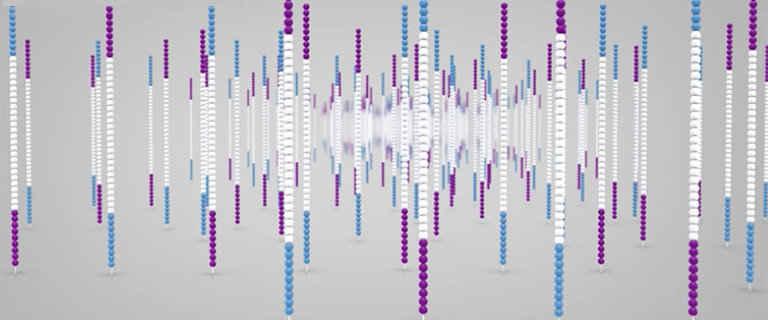Sequencing Quality Scores
What is a Quality Score in Sequencing?
Sequencing quality scores measure the probability that a base is called incorrectly. With sequencing by synthesis (SBS) technology, each base in a read is assigned a quality score by a phred-like algorithm1,2, similar to that originally developed for Sanger sequencing experiments.
Q Score Definition
The sequencing quality score of a given base, Q, is defined by the following equation:
Q = -10log10(e)
where e is the estimated probability of the base call being wrong.
- Higher Q scores indicate a smaller probability of error.
- Lower Q scores can result in a significant portion of the reads being unusable. They may also lead to increased false-positive variant calls, resulting in inaccurate conclusions.
A quality score of 20 (Q20) represents an error rate of 1 in 100 (meaning every 100 bp sequencing read may contain an error), with a corresponding call accuracy of 99%.
When sequencing quality reaches Q30, virtually all of the reads will be perfect, with no errors or ambiguities. This is why Q30 is considered a benchmark for quality in next-generation sequencing (NGS).
SBS Technology Overview
Illumina technology enables massively parallel sequencing with optimized SBS chemistry.
Learn More| Quality Score | Probability of Incorrect Base Call | Inferred Base Call Accuracy |
|---|---|---|
| 10 (Q10) | 1 in 10 | 90% |
| 20 (Q20) | 1 in 100 | 99% |
| 30 (Q30) | 1 in 1000 | 99.9% |
Illumina Sequencing Quality Scores
Illumina sequencing chemistry delivers high accuracy, with a vast majority of bases scoring Q30 and above. This level of accuracy is ideal for a range of sequencing applications, including clinical research.
Run Quality Monitoring
Learn what PhiX is and how it can be used as an in-run control for sequencing run quality monitoring in Illumina NGS.
Read BulletinMore About Quality Scores
For more in-depth information about sequencing quality scores, read the following technical notes:
Benefits of SBS Technology
Proven base-calling accuracy and uniform coverage enable robust base calling across the genome, giving you confidence in your results.
Learn MoreRelated Content
Next-Generation Sequencing
Learn how NGS compares to conventional methods, how the technology works, and what it can do for you.
Choosing an NGS Company
Seek out a best-in-class NGS company with user-friendly bioinformatics tools and industry-leading support and service.
NGS Experimental Design
Learn about read length, coverage, and other experimental considerations to help you plan your sequencing run.
Interested in receiving newsletters, case studies, and information on new applications? Enter your email address below.
References
- Ewing B, Hillier L, Wendl MC, Green P. (1998): Base-calling of automated sequencer traces using phred. I. Accuracy assessment. Genome Res. 8(3):175-185
- Ewing B, Green P. (1998): Base-calling of automated sequencer traces using phred. II. Error probabilities. Genome Res. 8(3):186-194
